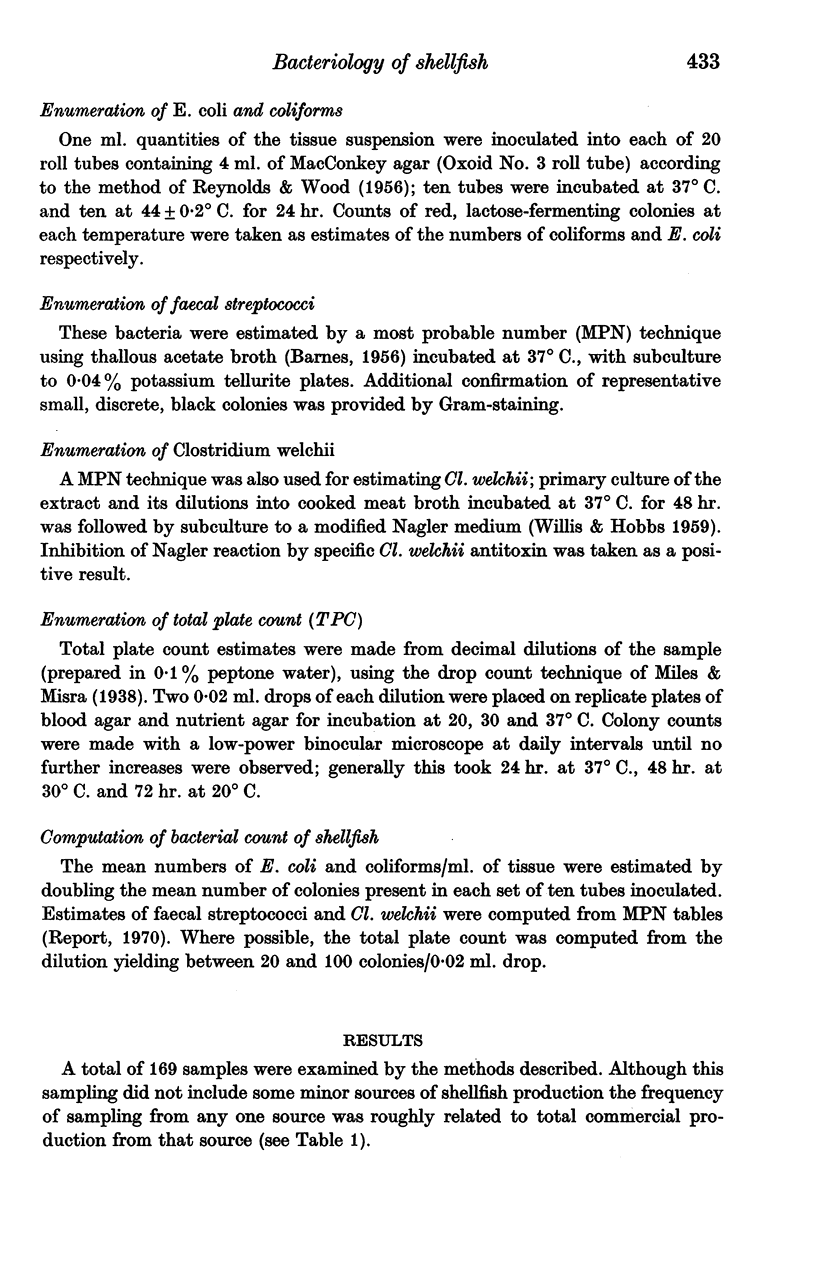Abstract
Incidents of non-specific illness associated with the consumption of oysters have highlighted the lack of published information on the bacteriology of shellfish suitable for consumption. Investigations showed that the majority of molluscan shellfish entering English markets conform to the accepted standard of less than 5 Escherichia coli/ml. tissue. The numbers of E. coli were related to the sanitary quality of the growing area but no relation could be established between numbers of E. coli and coliforms, faecal streptococci or Clostridium welchii. The numbers of non-specific bacteria varied considerably but shellfish from sources associated with non-specific illness yielded relatively high counts at 37 degrees C. The results showed that there was no justification for a standard based on total plate counts, which often exceeded 10(6)/g. Such a standard would have to be coupled with spoilage or the incidence of non-specific illness. The relation between the numbers of non-specific bacteria growing at 20 and 37 degrees C. appears to be a useful measure for assessing the likelihood that raw shellfish are a public health risk.
Full text
PDF









Selected References
These references are in PubMed. This may not be the complete list of references from this article.
- Preston F. S. An outbreak of gastro-enteritis in aircrew. Aerosp Med. 1968 May;39(5):519–521. [PubMed] [Google Scholar]
- SHERWOOD H. P., THOMSON S. Bacteriological examination of shell-fish as a basis for sanitary control. Mon Bull Minist Health Public Health Lab Serv. 1953 May;12:103–111. [PubMed] [Google Scholar]
- WILLIS A. T., HOBBS G. Some new media for the isolation and identification of Clostridia. J Pathol Bacteriol. 1959 Apr;77(2):511–521. doi: 10.1002/path.1700770223. [DOI] [PubMed] [Google Scholar]


